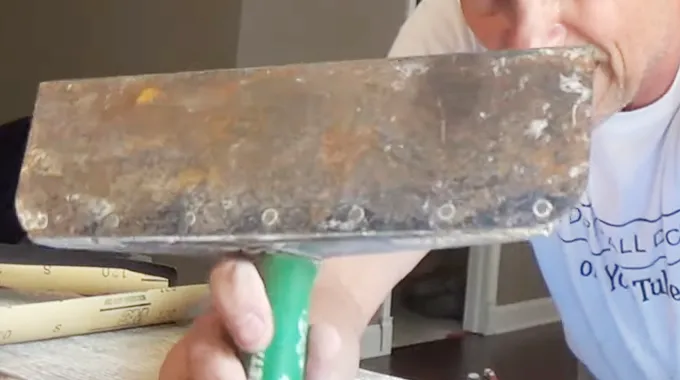Last Updated on December 14, 2022
Using a drywall knife is essential for applying drywall mud, filling in holes, and smoothing out surface imperfections on walls. You may find your drywall knife already rusty when you take it out of the toolbox.
When this occurs, you may wonder, “why does my drywall knife rust?” Rust is a common problem with metal drywall knives. Understanding the causes of rusting is essential for taking precautions and preventing it from recurring.
Several factors can contribute to the formation of rust on your drywall knife. One of the most common is exposure to water or moisture. Others include poor cleaning, chemical exposure, improper storage, etc. We will explore most of the causes and what you can do to keep them corrosion-free.
Why Does My Drywall Knife Rust? Understand the Causes
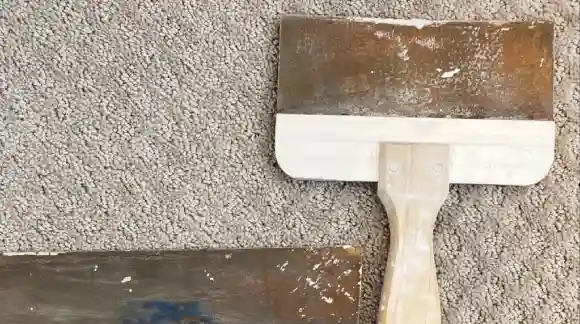
When you notice your drywall knife starting to rust, you may have been concerned about the implications for your tool.
After all, rust can cause the metal to degrade and weaken, making it more likely to break or chip. The following are some common causes of rust on a drywall knife. Keep these in mind to avoid rusting your drywall knife in the future.
1. Moisture Exposure
The metal can corrode and rust when you leave your drywall knife exposed to moisture. This could occur if you store the tool in a damp location or forget to wipe off excess water after washing it.
Rust is the result of a chemical reaction between iron and oxygen. When iron comes into contact with water or moisture in the air, it forms a hydrated oxide that is commonly known as rust.
This hydrated oxide will continue to grow over time and eventually result in the complete breakdown of the iron.
You can do a few things to protect your drywall knife from moisture. Below are some tips for you to consider:
Store the Drywall Knife in a Dry Place
Always keep your drywall knife in a dry and well-ventilated area. Store the tool inside a closed container or bag, such as a plastic tote, when it’s not in use.
This will help prevent rust from forming on your drywall knife if you live in an area that experiences high humidity levels.
Possibly a Good Match: Does Sandpaper work for sharpening drywall knives?
Wipe Off Excess Water After Cleaning
After cleaning your drywall knife, make sure it is completely dry. Any excess water or moisture left on the blade can cause rust over time.
After rinsing and drying the tool thoroughly, wipe down the blade and handle with a cloth or paper towel.
Apply a Protective Coating
If you would like to take extra precautions, you may want to coat the drywall knife with a protective coating. This will help prevent moisture and rust from forming on the surface of the metal.
You can find protective coatings specifically designed for use on metal tools, such as spray-on lubricants or rust-inhibiting oils.
2. Poor Cleaning
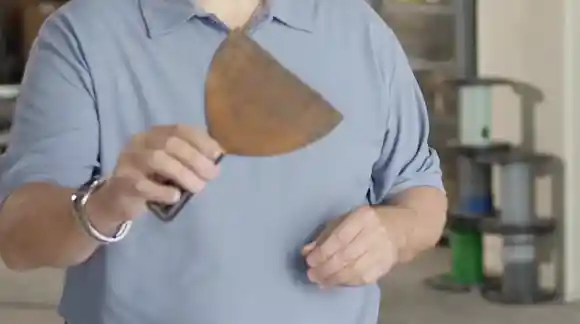
If you don’t thoroughly clean your drywall knife between uses, it can become clogged with various materials, such as paint, joint compound, and construction waste. These materials can create an environment for rust to form on the metal surface.
Make sure to clean the drywall knife thoroughly after each use. Use a damp cloth or sponge and mild soap to clean the blade and handle of the knife.
You can also use a soft-bristled brush to remove any stubborn residue. After cleaning, make sure to dry the tool completely before storing it away.
3. Chemical Exposure
Common household cleaners and solvents can also cause your drywall knife to rust. If you use any of these products near or on the tool, you could inadvertently introduce corrosive chemicals that will cause the metal to rust.
Cleaners with bleach especially can corrode metal surfaces quickly. It’s important to use caution when working near or with these products and ensure that they don’t come into contact with your drywall knife.
If you get any of these products on the tool, clean it off immediately and dry it completely before storing away. This will help reduce the risk of rust.
4. Poor Maintenance
It’s important to pay close attention to your drywall knife and perform regular maintenance on it. If you don’t inspect the tool for signs of rust or corrosion, you might not be able to catch the problem until it’s too late.
Check the blade and handle of your drywall knife every so often to ensure it’s still in good condition. Also, apply a protective coating periodically to help protect the metal from rusting.
What to Do If Your Drywall Knife is Already Rusty?
You can try different methods to remove the rust from your drywall knife if it is already rusty. Below are some effective ways to clean rust from taping knives. You can try any one of them to see what works best for you.
1. Vinegar Solution
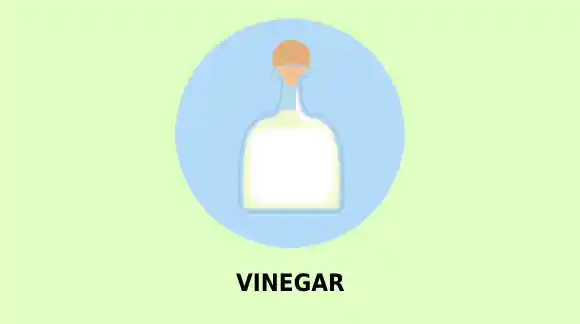
You can create a vinegar solution to help remove rust from a drywall knife. For this method, you will need white vinegar, a bowl, a soft sponge, and dish soap. Pour a glass of white vinegar into the bowl to begin.
Let the drywall knife sit in the vinegar for about 15 to 30 minutes. Then, take out the knife and scrub off the rust with a soft sponge. Once all the rust has been removed, wash the knife with dish soap and then rinse it with water. Before storing the knife, it should be completely dry.
2. Baking Soda Method
Using baking soda is another simple way of removing rust from your drywall knife. You will need baking soda, a sponge, and water.
Make a paste with the baking soda and water, and then spread it over the affected areas of your drywall knife.
Let the paste sit on the knife for about one hour. Next, use a sponge to scrub off the rust. After removing the rust, rinse the knife thoroughly with water and dry it thoroughly before storing it. Otherwise, the rust will return.
3. Lemon and Salt
Another tried-and-true method to remove rust is to use lemon and salt. The citrus acid of the lemon combined with the abrasive properties of salt will make quick work of removing rust.
You need to cover the rusty area of your taping knife with salt and then squeeze lemon juice over the salt. Leave the mixture on for about two hours, and then scrub the rust off with a soft sponge.
This method will effectively remove rust without damaging the metal of your drywall knife. Rinse with water and dry off with a soft cloth to protect your knife from future rusting.
4. Potato
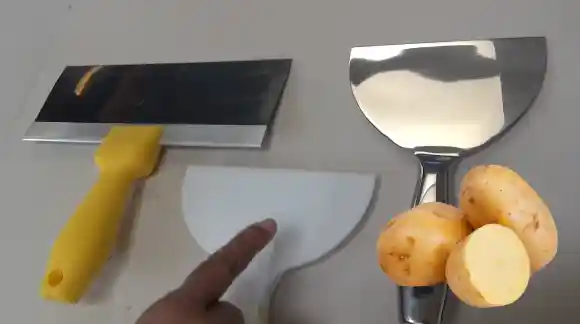
Surprisingly, you can actually use a potato as an anti-rust cleaner. You will need to collect a potato, salt or baking soda, and dish soap. Cut the potato in half and sprinkle salt or baking soda over it.
Rub the potato onto the rusty surface of the drywall knife to remove the rust. The acidity of the potato combined with the salt or baking soda should be enough to get rid of any rust.
Once you’re done, wash your knife with dish soap and rinse it with water. Before storing the knife, ensure that it is completely dry.
5. Steel Wool
As steel wool is an abrasive material, you can use it to clean your drywall knife of rust. Simply take a piece of steel wool and scrub away the rust from the surface of your tool. Through this process, the rust will loosen and easier to remove.
Be sure to wear protective gear, such as gloves, when using steel wool due to the possibility of skin irritation. Once you’re done, rinse your joint knife with water and dry it off. Steel wool can effectively remove rust from your drywall putty knife, but it may take some time and effort to get the job done.
You should also take extra precautions when using steel wool, as it can scratch the surface of your tool if used too harshly.
6. Using Rust Removers
If you don’t have the time or patience to try out any of the above methods, then a rust remover solution could be your best bet. You can purchase a commercial rust remover.
Many well-known brands are available, and you need to choose the best rust remover for drywall knives. Follow the instructions on the packaging and use the rust-remover to eliminate rust from your drywall knife.
No matter which method you choose to use, be sure to properly store your drywall knife when not in use to prevent future rusting. Use any of these rust removal methods above to keep your drywall knife looking like new.
What Kind of Drywall Knives Won’t Easily Rust?
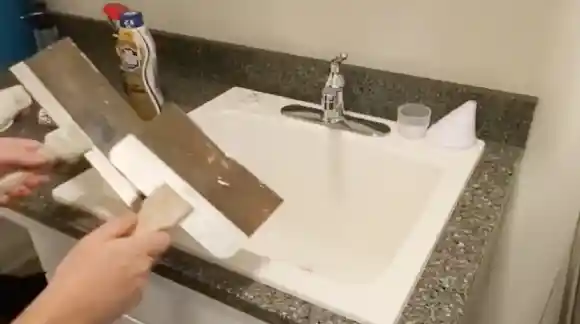
The stainless steel drywall knife is the most resistant to rust. It is also quite durable, making it a great choice for those who need a reliable and long-lasting drywall knife.
But stainless steel is not rust-proof, so you will still need to take steps to protect it from rusting. A drywall knife is usually made from stainless steel, carbon steel, or blue steel.
Among these three, stainless steel has the highest level of corrosion resistance. Carbon steel is more prone to rusting. But what really matters is how you take care of your drywall knife and the steps you take to prevent rust formation.
Assuring regular maintenance and cleaning and proper storage will help prevent the drywall knife from rusting.
Does Petroleum Jelly Prevent Rust on Your Drywall Knife?
Petroleum jelly is a great way to avoid rusting drywall knives. It creates a barrier between the metal and oxygen, which prevents rust from forming on your tool.
Regularly applying a thin layer of petroleum jelly to your drywall knife will help protect against corrosion and rust formation. There is a wide availability of petroleum jelly, which is inexpensive and easy to use.
Just make sure to apply a thin layer and wipe away any excess before putting your tool away, as it can attract unwanted substances.
What Oil Prevents Rust on Your Drywall Knife?
Mineral oil is a great preventative measure in keeping your drywall knife from rusting. Using mineral oil prevents moisture from entering the drywall knife and keeps the blade lubricated so that oxidation cannot occur.
You will need a cotton cloth or paper towel to apply mineral oil. Wipe down your drywall knife with the cloth and then use it to spread a thin layer of mineral oil over the entire blade.
Cover all areas, including crevices and edges. Allow the mineral oil to penetrate for a few minutes before wiping away any excess oil. In this way, you can prevent your drywall knife from rusting and extend its useful life.
Smoothly Work With A Rust-free Drywall Knife
We hope you now fully understand why rust can form on your drywall knife and how to remove it. You can utilize any of the methods above to ensure that your drywall knife is rust-free and looks as good as new.
When you do not have the time or patience for other methods, you may want to consider using the best rust remover.
Regular maintenance is key in preventing rust formation and proper storage when not in use. Stainless steel is the most rust-resistant type of drywall knife, but even this metal can be susceptible to oxidization without proper care. Petroleum jelly and mineral oil are great ways to keep your drywall knife from rusting, as they help create a protective barrier around the metal. Following these simple tips will help to keep your drywall knife rust-free and looking new.
Relevant Article To Read:
